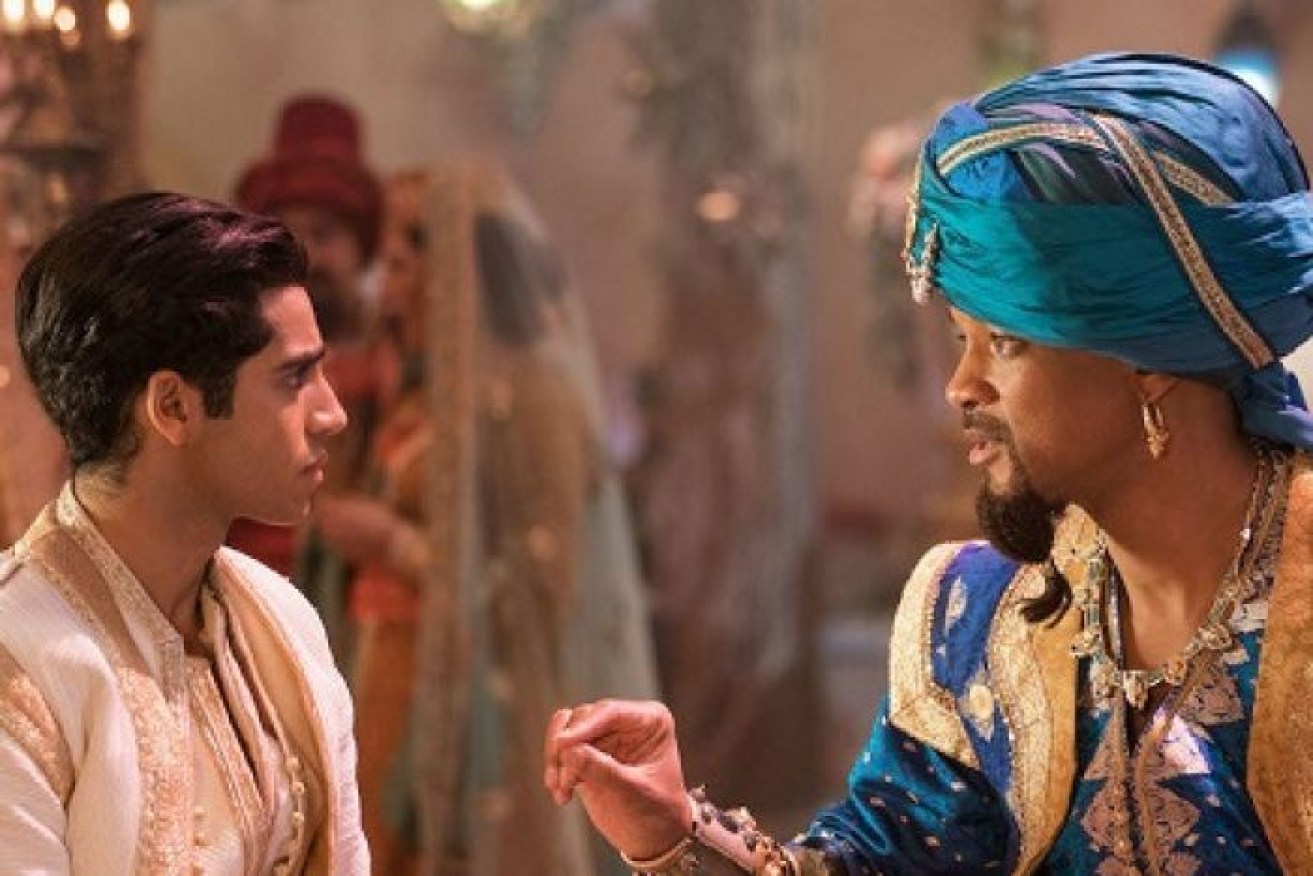Disney’s Aladdin live-action remake replaces the dated, racially-sensitive animation

The animated Aladdin film was Disney's first attempt to move beyond European fairytale tradition. Photo: Disney
If you’re heading to the cinema this weekend, you might notice Disney’s much-anticipated live-action remake of Aladdin.
It’s the latest in a string of live-action remakes, following Cinderella (2015) and Beauty and the Beast (2017).
Why do we need a new Aladdin when the animated version is only a generation old? Well, fairytales have a long history of being revised over and over to suit our changing values and beliefs.
Animated Aladdin looks dated
Fairytales have been at the heart of Disney productions from the studio’s inception.
The first seven animated shorts — or “Laugh-O-grams” — made by Walt Disney in 1922 were based on fairytales published by the Brothers Grimm and Charles Perrault, including Cinderella and Little Red Riding Hood.
These silent cartoons were screened before feature films and were not intended solely for children, but also for adult audiences.
Disney’s first animated feature, Snow White and the Seven Dwarfs (1937) was the most successful film ever made at the time of its release, and Disney made a further 11 full-length features based on fairytales.
Aladdin (1992) was the studio’s first attempt to move beyond the European fairytale tradition. It draws on the Middle Eastern folk tales collected in One Thousand and One Nights (although, Aladdin does not appear in the Arabic text).
Though it was the highest-grossing film of the year and the most lucrative animated film released until that point, some reviewers were critical of how Aladdin represents the Middle East through the fictional city of “Agrabah”.
Much of the negative response focused on the song Arabian Nights.
The lyrics originally suggested that Agrabah is a place “where they cut off your ear if they don’t like your face”.
This line was revised after a complaint by the American-Arab Anti-Discrimination Committee, yet a lyric about the city being “barbaric” remains.
The design of the heroic and villainous characters presents the Middle East and its people as “Other” — what Edward Said would call being “Orientalised”.
Reviewer Roger Ebert noted that most Arab characters in the film have “exaggerated facial characteristics – hooked noses, glowering brows, thick lips” and darker skin.
In contrast, Aladdin and Princess Jasmine look and sound, with their Anglo-American accents, “like white American teenagers”. Aladdin was reportedly modelled on the appearance of Tom Cruise.

Critics in the animated film suggested Aladdin looked too Caucasian. Photo: ABC
Not just ‘political correctness’
As race and gender politics change, fairytales and children’s stories become sites of concern for reflecting outdated world views.
Disney’s The Song of the South (1946), which is based on Uncle Remus stories, is so widely regarded as racially insensitive or even racist, that it has never been released on DVD in the US and will not screen on the Disney+ streaming service that will launch in November this year.
The animated Aladdin might be a nostalgic classic for those in their 20s and 30s, but it is far from aligned with contemporary ideas about diversity and representation.
Disney’s new live-action Aladdin has the potential to represent the familiar and popular story in a way that dismantles the race politics of the 1992 film that sit uncomfortably with many adult viewers today.
For a start, it features a predominantly non-white cast, and actors of colour in the leading roles, including Will Smith as Genie.
https://twitter.com/SarahSterling_/status/1130174987522830336
Ever since the Brothers Grimm collected and revised fairytales for children in the early 19th century, fairytales have been transformed to suit contemporary morals and political views.
Frozen (2013), which was influenced by Hans Christian Andersen’s The Snow Queen, was spectacularly successful because it rejected the earlier Disney passive princess trope popularised in films such as Cinderella and Sleeping Beauty.
Frozen demonstrated a demand for fairytales that mesh with contemporary ideas about women’s independence and desire to achieve more than marriage.
Tellingly, sequels to both Frozen and Maleficent (2014) are being released later this year.
While it may be unsettling for adults to see the Disney films that were part of their childhood change, it is a mistake to think that this is a new process or a direct result of “political correctness”.
A dig through a rare books collection reveals hundreds of Cinderellas, Little Red Riding Hoods, and Aladdins.
In 2019, these Disney remakes and sequels are as much a part of this process of retelling stories of enchantment as the oral tellers of folk tales who first shaped them.
Dr Michelle Smith is a senior lecturer in literary studies at Monash University where she teaches children’s literature and fairytales.
-ABC








